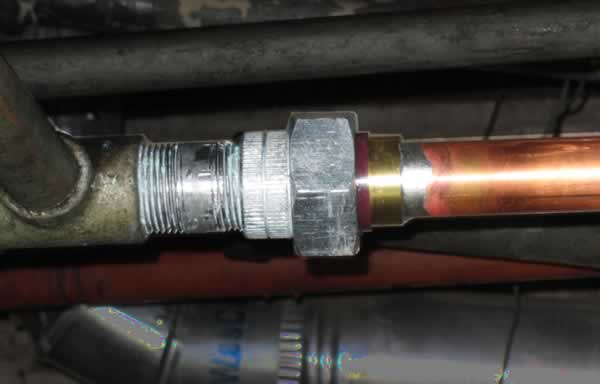It s far easier to make a repair to steel pipe with copper than with galvanized plumbing pipe because the galvanized calls for cutting threads on exact lengths of pipe.
Galvanized pipe to copper transition.
Use two pipe wrenches to loosen the old union.
Making the connection between plastic pipes such as abs or.
Install the lower half of the dielectric union to steel pipe.
Wrap threads on end of the steel pipe with teflon tape.
Benefits of galvanized pipes.
This eventually causes pipe degradation and leakage.
If the copper and galvanized pipes aren t the same diameter solder a reducing coupling to the copper pipe.
It might be a transition from threaded galvanized water pipes to copper pipes or from old cast iron sewer lines to today s abs.
Eventually galvanized pipe will have to be replaced and when that happens your choices are to replace it with more galvanized pipe copper pipe or plastic pipe.
And the male ends where the threads were cut into can become so thin that they leak when you try to screw on a new female fitting over the end of them.
You don t need to wrap plumbing tape around the union before you screw it together.
If the surface of the pipe is the color of a penny then the pipe is probably made from copper.
Plastic pipes are usually black and clamps should be visible.
This fitting joins a copper pipe to a galvanized pipe called a union.
Galvanized steel pipes on the other hand are a steel gray color.
So try to make the transition at an existing female fitting.
Cut copper pipe just above the corroded connection using a tubing cutter.
The reaction creates scale which will eventually clog the pipe.
The inside of galvanized pipes gets thinner over the years.
The problem with galvanized pipe is that it reacts with the minerals in the water supply.
When water flows through pipes of two different metals the pipes will become eroded by electrical impulses from the slight acidity found in all water sources.
Since brass doesn t react with either the copper or the zinc one method is to make sure you have a threaded female end on both the copper and the steel pipes and then connect the two by simply inserting a short threaded brass nipple between them the second method is to use a special transition fitting called a dielectric union.
Tighten first with pliers then with pipe wrench.
Remove the old union from the steel pipe.





























